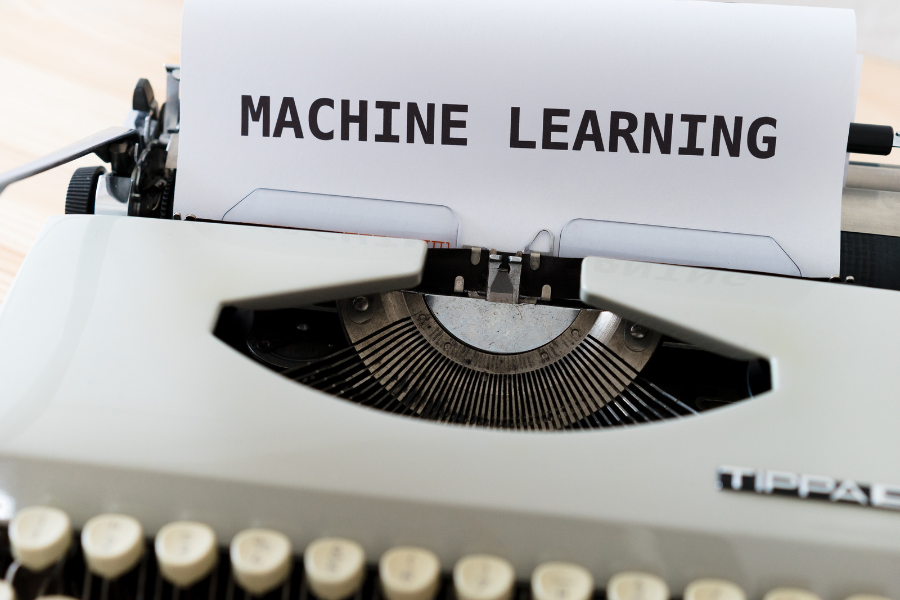Today, Machine Learning has become a rapidly growing field that involves the development of algorithms and statistical models that enable computer systems to learn from and make predictions or decisions based on data. If you’re a beginner looking to get started with Machine Learning, there are 5 steps you can take to build a strong foundation in this blog post.
1- Knowing the Fundamentals of Machine Learning
As often as not, getting started with the fundamentals of Machine Learning, you should focus on the following key areas:
- Mathematics: A solid understanding of linear algebra, calculus, probability theory, and statistics is essential for Machine Learning.
- Programming: You should have proficiency in at least one programming language, such as Python or R, and knowledge of software engineering best practices.
- Data Preparation: You should have experience in collecting, cleaning, and pre-processing data for machine learning tasks.
- Machine Learning Algorithms: You should have an understanding of supervised learning, unsupervised learning, and reinforcement learning, as well as the different types of algorithms used in each area.
- Evaluation Metrics: You should know how to evaluate machine learning models using metrics such as accuracy, precision, recall, F1-score, and ROC-AUC.
- Model Selection and Tuning: You should have knowledge of techniques for selecting the best machine learning model for a given task and how to optimize its parameters.
- Deployment and Monitoring: Finally, you should be familiar with the process of deploying machine learning models to production environments and monitoring their performance over time.
Bottom Line
To learn the fundamentals of Machine Learning, you can start with online courses, textbooks, and tutorials, and practice implementing algorithms using open-source tools like scikit-learn or TensorFlow.
2- Choosing the Best Tools and Programming Languages

As a whole, choosing the best tools and programming languages for a machine learning project can depend on several factors, including the task at hand, the size of the dataset, the hardware and infrastructure available, and the skills and preferences of the development team. However, here are some general guidelines to help you choose the best tools and programming languages for your project:
- Language: Python is the most commonly used language for machine learning due to its simplicity, versatility, and the large community of users. R is also popular, particularly for statistical modeling and data analysis. Other languages, such as Java and C++, can also be used for machine learning but are less common.
- Libraries and Frameworks: Python has a wide range of machine learning libraries and frameworks, such as sci-kit-learn, TensorFlow, and PyTorch, that provide a high-level interface for building and training machine learning models. R also has several libraries, such as caret and mlr, that provide similar functionality.
- Hardware: If you have access to powerful hardware, such as GPUs or TPUs, you may be able to accelerate training times and improve performance by using frameworks that support distributed computing, such as TensorFlow, PyTorch, and Apache Spark.
- Development Environment: Integrated Development Environments (IDEs) such as PyCharm, Jupyter Notebook, and Spyder provide a user-friendly interface for developing and testing machine learning models.
- Deployment: When it comes to deploying machine learning models, you should choose a language and framework that is compatible with your production environment. For example, if you’re deploying to a web application, you may choose a Python-based web framework like Flask or Django.
Bottom Line
In general, it’s a good idea to choose tools and programming languages that have a large community of users and active development, as this will provide you with the most support, documentation, and examples. Additionally, you should consider your team’s expertise and experience when choosing tools and languages, as this can affect development time and quality.
3- Data Gathering and Preparation for Machine Learning

Normally, gathering and preparing data is a crucial step in any machine-learning project, and it requires careful planning and attention to detail. Here are some general guidelines to help you gather and prepare data for machine learning:
- Define the problem: Before you start gathering data, you should clearly define the problem you’re trying to solve and the type of data you need. This will help you determine where to look for data and what features to extract from it.
- Data Sources: Identify potential sources of data, such as databases, APIs, web scraping, or manual collection. Depending on the data source, you may need to negotiate data access, sign data use agreements or comply with privacy regulations.
- Data Collection: Once you have identified your data sources, you can start collecting data. Make sure you collect enough data to train your model adequately and test it thoroughly. The data should be representative of the problem you’re trying to solve and cover all possible scenarios.
- Data Cleaning: Raw data often contains errors, missing values, duplicates, and outliers that can negatively impact model performance. Therefore, you should clean and preprocess the data before training your model. This may involve filling in missing values, removing duplicates, and transforming the data into a format that can be used by machine learning algorithms.
- Data Exploration: Exploratory data analysis can help you understand the data and identify patterns or correlations that can inform your feature engineering and model selection. Visualization tools like Matplotlib and Seaborn can be helpful in this process.
- Feature Engineering: Feature engineering is the process of selecting, transforming, and combining the most relevant features from the raw data to improve model performance. This can involve domain knowledge, statistical analysis, and data visualization techniques.
- Data Splitting: Finally, you should split the data into training, validation, and testing sets. The training set is used to train the model, the validation set is used to tune hyperparameters, and the testing set is used to evaluate the model’s performance.
Bottom Line
In short, data preparation for machine learning requires careful planning, attention to detail, and domain expertise. By following these general guidelines, you can ensure that your data is of high quality and suitable for training accurate and reliable machine learning models.
4- Putting Machine Learning Algorithms into Practice

In general, putting machine learning algorithms into practice involves several steps, including model selection, training, evaluation, and deployment. Here are some general guidelines to help you put machine learning algorithms into practice:
- Problem Definition: First, you need to define the problem you’re trying to solve and select the appropriate machine-learning algorithm for the task. This involves understanding the problem domain, the type of data you have, and the desired output.
- Data Preparation: Next, you need to prepare the data for training the machine learning algorithm. This includes data cleaning, data exploration, feature engineering, and data splitting into training, validation, and testing sets.
- Model Selection: Select the appropriate machine learning algorithm for the task at hand based on the problem definition and data preparation steps. Some common algorithms include linear regression, logistic regression, decision trees, random forests, neural networks, and support vector machines.
- Training the Model: Train the model using the training data and the selected algorithm. This involves selecting appropriate hyperparameters and optimizing the model’s performance using evaluation metrics.
- Model Evaluation: Evaluate the model’s performance using the validation and testing datasets. This involves computing evaluation metrics such as accuracy, precision, recall, F1-score, and ROC-AUC.
- Model Deployment: Once the model has been trained and evaluated, you can deploy it to a production environment for use in real-world scenarios. This involves integrating the model into a software application, web service, or other deployment scenarios.
- Model Monitoring: Once the model is deployed, it’s important to monitor its performance over time to ensure that it continues to perform as expected. This may involve monitoring for changes in data distribution, monitoring for changes in model accuracy, and monitoring for security vulnerabilities.
Bottom Line
In brief, putting machine learning algorithms into practice involves a series of steps, including problem definition, data preparation, model selection, training, evaluation, deployment, and monitoring. By following these general guidelines, you can build accurate and reliable machine-learning models that are suitable for real-world scenarios.
5- Evaluating and Improving Machine Learning Models
As a body, evaluating and improving machine learning models is an iterative process that involves several steps. Here are some general guidelines to help you evaluate and improve machine learning models:
- Define Evaluation Metrics: First, you need to define the evaluation metrics that you’ll use to measure the model’s performance. Common metrics include accuracy, precision, recall, F1-score, and ROC-AUC. The choice of evaluation metrics depends on the problem you’re trying to solve and the type of data you have.
- Cross-Validation: Cross-validation is a technique used to assess the performance of a machine-learning model on unseen data. This involves splitting the data into training and testing sets multiple times and averaging the evaluation metrics.
- Model Selection: Model selection involves choosing the best machine-learning algorithm for the task at hand. This may involve comparing the performance of different algorithms on the same dataset or selecting the best hyperparameters for a particular algorithm.
- Feature Engineering: Feature engineering is the process of selecting, transforming, and combining the most relevant features from the raw data to improve model performance. This can involve domain knowledge, statistical analysis, and data visualization techniques.
- Regularization: Regularization is a technique used to prevent the overfitting of machine learning models. This involves adding a penalty term to the loss function that encourages the model to have simpler coefficients.
- Ensemble Methods: Ensemble methods are a technique used to combine multiple machine learning models to improve performance. This involves training several models on the same data and averaging their predictions.
- Hyperparameter Tuning: Hyperparameter tuning is the process of selecting the optimal hyperparameters for a machine learning algorithm. This involves selecting a range of values for each hyperparameter and using cross-validation to evaluate the model’s performance for each set of hyperparameters.
Bottom Line
In summary, evaluating and improving machine learning models involves defining evaluation metrics, using cross-validation, selecting the best algorithm, performing feature engineering, using regularization, ensemble methods, and hyperparameter tuning. By following these general guidelines, you can build accurate and reliable machine-learning models that are suitable for real-world scenarios.
Conclusion
In conclusion, machine learning is a powerful tool that can be used to solve a wide range of problems. To build accurate and reliable machine learning models, it’s important to follow a structured process that involves problem definition, data preparation, model selection, training, evaluation, deployment, and monitoring. Moreover, evaluating and improving machine learning models is an iterative process that involves defining evaluation metrics, cross-validation, model selection, feature engineering, regularization, ensemble methods, and hyperparameter tuning.
By following these guidelines, you can build machine learning models that are suitable for real-world scenarios and achieve the desired outcomes.
It is recommended to start learning Machine-Learning here!


